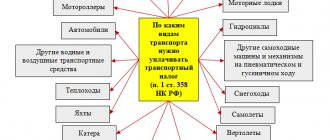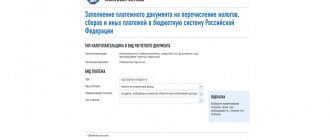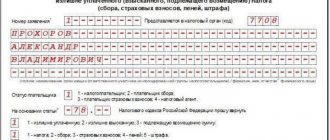UST in 2021: why is it needed?
The abbreviation UST stands for unified social tax. Before moving on to the issue of the size of the UST in 2021, let us briefly dwell on the nature of this tax, its objectives and objects of taxation.
To begin with, let us explain that legally this tax has not existed for several years; it was abolished 9 years ago. But out of habit, different contributions for this purpose are called a single social tax. In addition, there is a possibility that it will be returned.
It is calculated using both budgetary and extra-budgetary sources of funds. The purpose of the UST is to provide employees with the opportunity to receive a state pension and a number of social benefits in the future. From the same source, the necessary amounts are allocated for free assistance in medical organizations, the list of which is determined by law.
Will the unified social tax return in its previous form?
Many people say that the unified social tax will return in 2020. There is a very simple explanation for this, because according to some experts, a single payment contribution will significantly make the life of entrepreneurs in the country easier.
Today, many accountants need to constantly think about which fund the contributions should go to, which causes confusion in documents and a large number of errors.
A single payment will simplify this process. However, the unclear question remains that you will still need to submit documents for verification to different funds, which will not relieve difficulties.
In modern times, the development and control of the social base is carried out by the Federal Tax Service, and so far no changes in this matter are expected in the near future.
Who pays, what is the object of taxation
Everyone who officially works must pay this type of tax. These are two large groups of taxpayers.
1. Individual entrepreneurs engaged in private practice.
2. Individuals who do not belong to the category of individual entrepreneurs; Individual entrepreneurs, enterprises and organizations, specific people who make payments to individuals.
These groups have slightly different objects of taxation under the unified social tax. The first group must make deductions from all types of income remaining after taking into account the expenses specified by law. For those who fall into the second group, the entire volume of payments that were made to individuals under contracts of various types becomes objects of taxation: both labor and the entire range of civil law ones.
How is the UST rate calculated in 2021?
For the main group of taxpayers, UST rates in 2021 remained the same as before. What does it consist of? Of these three types of payments:
- contributions to compulsory pension insurance, the rate of which is 22%;
- contributions for compulsory health insurance, their amount is 5.1%;
- payments to the Insurance Fund amounting to 2.9%.
- payments for accident insurance, the rate depends on the risk group of business activity.
The maximum amount of contributions to pension insurance in 2019 was set at 234,832 rubles; in 2021, the maximum amount of pension contributions will increase to 259,584 rubles. The maximum amount of pension contributions is calculated based on eight times the size of the fixed contribution. Since the fixed contribution to pension contributions remained at the 2020 level, their maximum amount for 2021 was also retained - 259,584 rubles.
As for the interest rate, it varies somewhat depending on the amount of charges.
If the limit set for a given year is reached, it can be adjusted downwards. In 2021, the above-mentioned rate of 2.9% for the Social Insurance Fund applies to accruals for amounts less than 865,000 rubles. If the amounts are more than 865,000, then the rate on this fund will be zero. In 2020, contributions to the Social Insurance Fund are paid until the income reaches 912,000 rubles. For social insurance contributions in 2021, the income limit for calculating contributions is RUB 966,000. After one employee reaches such income, contributions to OSS are no longer accrued from his income in 2021, regardless of the number of places of work.
With regard to contributions to compulsory pension insurance, the rule is the same: if accruals are less than 1,150,000 rubles, then the unified social tax rate is set at 22%, and for payments for amounts over 1,150,000 rubles it is reduced to 10%. In 2021, with an income of 1,292,000, the rate is 22%, and above this amount the rate is reduced to 10%. In 2021, having reached the threshold of 1,465,000, the pension contribution rate is reduced from 22% to 10%.
In order to promptly begin to apply reduced rates, the amount of which depends on the employee’s income, when hiring a new employee, be sure to request a certificate of income received in the form of wages from the previous place of work.
There are no maximum restrictions for compulsory health insurance; in 2021, 5.1% is calculated from the entire amount of income.
General tax rate of the UST
There is a general bet size that is suitable for almost all citizens. Typically, in a commercial enterprise, the director is the main taxpayer, who transfers contributions for all subordinates.
The UST rate (the general figure was given above) at the beginning of the current year 2021 includes:
- Payment for basic health insurance – 5.1%
- Deductions to pay off benefits for temporary incapacity, as well as child care benefits – 2.9%
- The payment to the Pension Fund of the Russian Federation is 22% of an individual’s salary
So far, the amount of UST deductions has not changed compared to 2018, but the rate increase is projected to increase, more on this below. You also need to take into account the insurance fence in case of injury to an employee. It must be transferred not to the Federal Tax Service, but to the Social Insurance Fund. The amount of such transfer will depend on the type of activity of the organization.
Features of calculations for individual entrepreneurs
How much percent of the unified social tax will individual entrepreneurs have to pay in 2021? A slightly different payment system has been developed for individual entrepreneurs. Firstly, they are not obliged to pay into insurance funds; they can only do this on a voluntary basis. They retain mandatory contributions to two funds: Pension and Medical Insurance. In 2021, both were calculated in proportion to the minimum wage.
The formula was this. We calculate contributions to the health insurance fund based on the rate of 5.1% of the minimum wage for the year, that is, 12 * 5.1% * minimum wage. For the Pension Fund, the calculation is similar, but we apply a rate of 26%.
It must be borne in mind: if the income of an individual entrepreneur per year turns out to be above three hundred thousand rubles, then one percent of the amount by which this limit is exceeded is added to all the deductions listed above.
As it was before?
Previously, the tax rate was regressive, that is, it was possible to observe a tax reduction provided that wages increased.
Certain categories of citizens had benefits. And the maximum rate was 26% of wages, of which 20% went to the Pension Fund, 3.2 to the Social Insurance Fund, 0.8% was deducted for compulsory medicine to the federal fund, and another 2% to territorial funds for health insurance. Today, the total rate remains the same, but contributions to the funds have changed.
And in 2017, the tax service again began to administer insurance payments from the population, thus, the unified social tax UST has actually returned since 2021, although it has a somewhat unusual structure.
Main changes to the unified social tax
Speaking about the table of UST rates in 2021, we must also remember about a number of amendments related to the payment of UST, which were introduced this year in connection with changes affecting the Tax Code of Russia.
1. Now it is impossible to round off amounts (in any direction) when making deductions of contributions under the Unified Social Tax.
2. The concept of a maximum indicator for accrual of payments for pension insurance has appeared. It is fixed by law, and corresponding changes have been made to local regulations relating to taxation. But such restrictions have not yet been provided for compulsory medical insurance.
3. Insurance premiums will not be collected from the amount of compensation payments that is less than three average monthly earnings if the employee resigns. This innovation also concerns the payment of travel expenses. And insurance interest will not be charged on them, but only if these expenses are documented.
4. From now on, employers will also be required to contribute the necessary amounts for the purposes of pension insurance for foreign citizens hired. Exceptions are provided only for high-class foreign specialists.
5. The number of enterprises granted the right to electronic reporting has increased.
6. Fixed contributions of individual entrepreneurs will not be calculated based on the minimum wage.
Changes related to postponements and audits
Supervisory enterprises can now, if there are serious reasons, increase the duration of inspections from the previous four months to six. Such grounds are:
- serious violations that require urgent investigation and immediate action; they must be recorded and documented;
- violations in branches located in different constituent entities of the Russian Federation that require verification;
- inaccuracy in documents or lack of requested data;
- failure to timely make insurance payments, including due to force majeure.
The employer (IP) has the right and even must, in the event of such emergency circumstances, ask for a deferment or installment plan for payments for the unified social tax. These may be reasons such as an unreasonable delay in financing, and for enterprises conducting seasonal work, also force majeure: man-made and natural disasters, military operations, etc.
The subject of taxation will need to submit an application in the established form to the relevant organization. Based on it, a certain decision will be made.
Unified Social Tax rate tables in 2021
Insurance premium rates in 2021
| To the Pension Fund for compulsory pension insurance | In the Social Insurance Fund for insurance in case of temporary disability and maternity (VNiM) | In FFOMS for compulsory medical insurance | ||
| From the amount of payments within the established limit of the base | From the amount exceeding the established limit value of the base | From the amount of payments within the established limit of the base | From the amount exceeding the established limit value of the base | 5,1% |
| 22% | 10% | 2,9% | Not credited | |
Reduced insurance premium rates in 2021
| Insured category | OKVED codes for types of activities* | Tariff for calculating contributions | ||
| to the Pension Fund of Russia | in FSS on VNiM | in FFOMS | ||
| Organizations and individual entrepreneurs on the simplified tax system, conducting a preferential type of activity, the income from which is at least 70% of the total income of the simplified tax system. At the same time, the annual income of a simplifier should not exceed 79 million rubles. If this limit is exceeded, the payer of contributions loses the right to reduced tariffs from the beginning of the billing period (clause 5, clause 1, clause 3, clause 2, clause 6 of Article 427 of the Tax Code of the Russian Federation, as amended, valid from 01/01/2017) | 13, 14, 15, 16, etc. | 20 | 0 | 0 |
| Pharmacy organizations, as well as individual entrepreneurs with a license to conduct pharmaceutical activities, on UTII. Reduced contribution rates apply only to employees engaged in pharmaceutical activities (clause 6, clause 1, clause 3, clause 2, article 427 of the Tax Code of the Russian Federation, as amended, valid from 01/01/2017) | 46.18.1, 46.46.1, 47.73 | 20 | 0 | 0 |
| Individual entrepreneurs applying the patent taxation system - in relation to payments and remuneration of employees who are engaged in a patent type of activity. For some types of activities, this “benefit” does not apply (clause 9, clause 1, clause 3, clause 2, article 427 of the Tax Code of the Russian Federation, as amended, valid from 01/01/2017) | 31.0, 74.20, 75.0, 96.01, 96.02, etc. | 20 | 0 | 0 |
| Non-profit organizations on the simplified tax system, except for state and municipal institutions, operating in the field of social services for citizens, scientific research and development, education, healthcare, culture, art and mass sports (clause 7, clause 1, clause 3, clause 2, clause 7 Article 427 of the Tax Code of the Russian Federation as amended, valid from 01/01/2017) | 37, 86, 87, 88, 93, etc. | 20 | 0 | 0 |
| Charitable organizations on the simplified tax system (clause 8, clause 1, clause 3, clause 2, clause 8, article 427 of the Tax Code of the Russian Federation, as amended, valid from 01/01/2017) | 64.9, 88.10 | 20 | 0 | 0 |
| Organizations operating in the field of information technology (clause 3, clause 1, clause 1, clause 2, clause 5, article 427 of the Tax Code of the Russian Federation, as amended, valid from 01/01/2017). | 62, 63 | 8 | 2 | 4 |
| Business entities and partnerships on the simplified tax system that are engaged in the implementation of the results of intellectual activity (inventions, utility models, etc.), the rights to which belong to budgetary and autonomous (including scientific) institutions (clause 1, clause 1, clause 1 Clause 2, Clause 4 of Article 427 of the Tax Code of the Russian Federation as amended, valid from 01/01/2017). | 72 | 8 | 2 | 4 |
| Organizations and individual entrepreneurs that have entered into agreements with the management bodies of special economic zones on the implementation of technological innovation activities, as well as tourist and recreational activities (clause 2, clause 1, clause 1, clause 2, article 427 of the Tax Code of the Russian Federation, as amended, valid. from 01/01/2017). | 65.20, 79.1, 94.99, 62.0, 63.1, 63.11.1, etc. | 8 | 2 | 4 |
| Payers of contributions making payments and rewards to crew members of ships registered in the Russian International Register of Ships (with some exceptions) in relation to these payments (clause 4, clause 1, clause 2, clause 2, article 427 of the Tax Code of the Russian Federation, as amended, valid from 01/01/2017) | 50 | 0 | 0 | 0 |
| Organizations that have received the status of a participant in the project for the implementation of research, development and commercialization of their results “Skolkovo” (clause 10, clause 1, clause 4, clause 2, article 427 of the Tax Code of the Russian Federation, as amended, valid from 01/01/2017) | 72.1 (Part 8 of Article 10 of the Law of September 28, 2010 No. 244-FZ) | 14 | 0 | 0 |
| Payers of contributions who have received the status of a participant in a free economic zone on the territory of the Republic of Crimea and the federal city of Sevastopol (clause 11, clause 1, clause 5, clause 2, clause 10, article 427 of the Tax Code of the Russian Federation, as amended, valid from 01.01. 2017) | Any OKVED codes, except 05, 06, 07, 08, 09.1, 71.12.3 (Part 2 of Article 12 of the Law of November 29, 2014 No. 377-FZ) | 6 | 1,5 | 0,1 |
| Contribution payers who have received the status of resident of the territory of rapid socio-economic development (clause 12, clause 1, clause 5, clause 2, clause 10, article 427 of the Tax Code of the Russian Federation, as amended, valid from 01/01/2017) | Types of activities are established separately for each territory (clause 1, part 2, article 3 of Law No. 473-FZ dated December 29, 2014). | 6 | 1,5 | 0,1 |
| Payers of contributions who have received the status of resident of the free port of Vladivostok (clause 13, clause 1, clause 5, clause 2, clause 10, article 427 of the Tax Code of the Russian Federation, as amended, valid from 01/01/2017) | Any types of activities, except those prohibited by the decision of the Supervisory Board of the Free Port of Vladivostok (Part 1.2 of Article 6 of the Law of July 13, 2015 No. 212-FZ). For example, oil and natural gas production activities are prohibited, OKVED code 06.1 | 6 | 1,5 | 0,1 |
What has the abolition of the unified social tax changed in insurance payments?
With the abolition of the unified social tax, Ch. 24 of the Tax Code of the Russian Federation, dedicated to this tax (clause 2 of Article 24 of the Law of the Russian Federation “On Amendments to Certain Legislative Acts...” dated July 24, 2009 No. 213-FZ). The Law of the Russian Federation “On Insurance Premiums...” dated July 24, 2009 No. 212-FZ came into force, establishing other rules for calculating these payments. And after the transfer of insurance premiums to the control of the Federal Tax Service, these rules are regulated by the Tax Code of the Russian Federation:
- The list of payments subject to contributions has expanded. If previously payments made at the expense of net profit were removed from them, now the dependence on this circumstance has disappeared. Accordingly, the list of payments not subject to taxation turned out to be strictly defined.
- The general regressive scale of tax rates has disappeared. Instead, a limit on income subject to contributions was introduced. This limit has become indexed and is systematically increased in accordance with the growth of the average salary in the Russian Federation. Above this limit, income taxation at a reduced rate is present only for payments to the Pension Fund.
- The overall contribution rate for the bulk of taxpayers (using OSNO) was supposed to increase by 8% from 2011 due to an increase in rates in the Pension Fund and the Compulsory Medical Insurance Fund. For preferential categories of payers (special regime workers, residents of special zones, organizations with disabled people), a transition period was provided for 2011–2014, during which previously absent rates were introduced for them and the rates that were preferential were increased. The general maximum rate in force today is 30% of all contributory payments made to an individual. Its value is 4% higher than that which was in effect under the unified social tax. The circle of people entitled to a reduced rate has noticeably decreased.
To learn how this 30% is distributed among the funds, read the article “What do 30.2% of insurance premiums consist of?”
These changes indicate that the replacement of the unified social tax with insurance contributions has led to a significant increase in the tax burden for all payers of these contributions.
Categories of individual entrepreneurs for which the preferential tariff was canceled in 2021
| Organizations and individual entrepreneurs on the simplified tax system, conducting a preferential type of activity, the income from which was at least 70% of the total income of the simplified tax system. At the same time, the annual income of the simplifier did not exceed 79 million rubles. | 13, 14, 15, 16, etc. | 22 | 5,1 | 2,9 |
| Pharmacy organizations, as well as individual entrepreneurs with a license to conduct pharmaceutical activities, on UTII. | 46.18.1, 46.46.1, 47.73 | 22 | 5,1 | 2,9 |
| Individual entrepreneurs applying the patent taxation system - in relation to payments and remuneration of employees who are engaged in a patent type of activity. For some types of activities, this “benefit” was not applied (clause 9, clause 1, clause 3, clause 2, article 427 of the Tax Code of the Russian Federation, as amended, valid from 01/01/2017) | 31.0, 74.20, 75.0, 96.01, 96.02, etc. | 22 | 5,1 | 2,9 |
How to identify UST payers
The vast majority of payers of this tax are employers. But the definition of this category used within the framework of the current labor legislation and for the purposes of paying the unified social tax (1, Article 235) is somewhat different. Therefore, it is worth understanding who is the employer obligated to pay UST.
This group can include the following types of companies and individuals:
- Foreign organizations that operate on the territory of the Russian Federation, including through a separate division.
- UST must be accrued if individuals and legal entities employ labor resources on the basis of civil law relations.
- Employer status is assigned to those Russian organizations that are a legal entity.
- Entrepreneurs. We are talking about individuals who carry out their activities without legal status. These can be private detectives, notaries and other individual entrepreneurs equated to the norms of paragraph. 3 p. 2 art. 11 NK.
- Family and tribal communities of small peoples of the North, operating within the framework of traditional areas of management, as well as farming. The UST rate is relevant for them in the case when hired workers are hired and payments are made to individuals.
The following feature of this tax is important: if a subject belongs to two groups of payers at the same time, then he must pay taxes on each basis.
Insurance premiums for individual entrepreneurs “for themselves” in 2021
| Fixed payment for compulsory health insurance | 6884 rubles |
| A fixed payment for compulsory pension insurance, if the amount of the individual entrepreneur’s annual income does not exceed 300,000 rubles. | 29,354 rubles |
| Additional payment to the Pension Fund if the annual income of an individual entrepreneur exceeds 300,000 rubles. | 1% of the amount of the annual income of an individual entrepreneur, reduced by 300,000 rubles, but not more than 234,832 rubles. The maximum amount of contributions paid by individual entrepreneurs to the Pension Fund in 2021 is RUB 234,832. (RUR 29,354 x 8). Minus the fixed payment for compulsory pension insurance, the result is 205,478 rubles. (234,832 – 29,354.) |
Insurance payments for individual entrepreneurs
Individual entrepreneurs are not required to pay a full list of insurance premiums. They only pay a fixed amount for themselves. Previously, in order to understand how much to transfer, it was necessary to know the size of the minimum wage. However, now the insurance fee has taken on a specific value.
Fixed payments for 2021:
- Compulsory health insurance. 6884 rubles.
- Pension Fund. 29,354 rubles.
These indicators are established for those entrepreneurs whose annual income does not exceed 300 thousand rubles. If this limit is exceeded, additional deductions must be made: 1% of the amount that exceeds 300,000 rubles. So, if an entrepreneur has an annual income of 500 thousand rubles, the additional fee will be (500,000-300,000)*0.01=2000 rubles.
You can calculate contributions for individual entrepreneurs using the official calculator from the Federal Tax Service, located at https://www.nalog.ru/rn77/service/ops/. To calculate the amount, only two types of input data are needed: the tax period and the total income for this time. As a result of the calculations, the amounts of fixed payments relevant for 2021 will be shown in table form, as well as the amount of deductions that are charged for income of more than 300 thousand rubles.
If an entrepreneur needs to calculate tax not for a year, but for a month or quarter, he can do this by entering the exact start and end date of the reporting period.
Contributions for employees hired by an individual entrepreneur are paid at standard rates.
Insurance premiums for individual entrepreneurs “for themselves” in 2021
| Fixed payment for compulsory health insurance | 8,426 rubles |
| A fixed payment for compulsory pension insurance, if the amount of the individual entrepreneur’s annual income does not exceed 300,000 rubles. | 32,448 rubles |
| Additional payment to the Pension Fund if the annual income of an individual entrepreneur exceeds 300,000 rubles. | 1% of the amount of the individual entrepreneur’s annual income, reduced by 300,000 rubles, but not more than 259,584 rubles. The maximum amount of contributions paid by individual entrepreneurs to the Pension Fund in 2021 is RUB 259,584. (RUR 32,448 x 8). Minus the fixed payment for compulsory pension insurance, the result is 227,136 rubles. (259,584 – 32,448.) |
This might also be useful:
- How to make a Z-report at the cash register?
- How to reduce the simplified tax system for insurance premiums?
- Examples of calculating UTII in 2021
- Payment of 1% on income over 300,000 rubles
- Transport tax under the simplified tax system and OSNO in 2021
- Property tax for organizations and individuals
Is the information useful? Tell your friends and colleagues
Dear readers! The materials on the TBis.ru website are devoted to typical ways to resolve tax and legal issues, but each case is unique.
If you want to find out how to solve your specific issue, please contact the online consultant form. It's fast and free!






